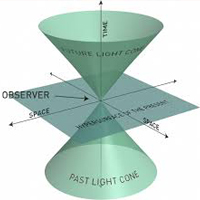Many countries and societies in the world are marked by severe inequality between groups. Whereas in some societies inequality is severe and accompanied by tension between groups, in other societies, harmony and stability among groups co-exists with extreme inequality. Lasting social change, to ameliorate inequality, is often dependent on the collective action of groups. When will people act to challenge their subordinated position within a given social system? Within societies that have more harmonious relations between groups, how do interpersonal, intergroup, and societal relations strengthen or dampen disadvantaged group members’ willingness to engage in collective action? One focus of research within the lab seeks to understand when group members collectively act in response to a subordinated or disadvantaged position.
Drawing on social identity theory, one line of research within this area is particularly focused on how relations between or among groups shapes motivations for collective action. Indeed, within diverse contexts, institutions, or nations, the dynamics of group relations can shape not only a person’s understanding of their own identity and self-categorization, but also their quantitative and qualitative collective action preferences. Therefore our work examining collective action examines the implications of interpersonal and intergroup relational factors for collective action. Specifically, how relations between majority and minority groups (harmonious), subgroup relations among minority groups, and the broader system of intergroup dynamics, help to shape collective action or political solidarity preferences.
A second stream of work within this area investigates what makes for effective collective action in the eyes of observers or bystanders? Given the ubiquity of protest, what are the factors that help to explain when and why bystanders or third-parties positively respond to protest or a collective action event? This research explores how factors such as social identity, normativity of protest, perceived legitimacy, and form of protest help to explain when and why bystanders join movements.
In sum, drawing on the social identity perspective, as well as theories of collective action, this program of research focuses on understanding the psychology of collective action and resistance, as well as political solidarity between minority groups and among minority and majority groups.
Featured Publications

Glasford, D.E., & Caraballo, K. (in-press).
Collective action from a distance:
Distance shapes how people view
victims of injustice and decreases
willingness to engage in collective
action. Group Processes & Intergroup
Relations, 19, 27-42. (PDF)

Glasford, D.E., Pratto, F. & Dovidio,
J.F. (2008). Intragroup Dissonance:
Responses to In-group violation of
personal values. Journal of
Experimental Social Psychology, 44,
1057-1064. (PDF)

Glasford, D.E., Dovidio, J.F., &
Pratto, F. (2009). I continue to feel so
good about us: In-group identification
and the use of social identity-enhancing
strategies to reduce Intragroup
Dissonance. Personality and Social
Psychology Bulletin, 35, 415-427.
(PDF)
